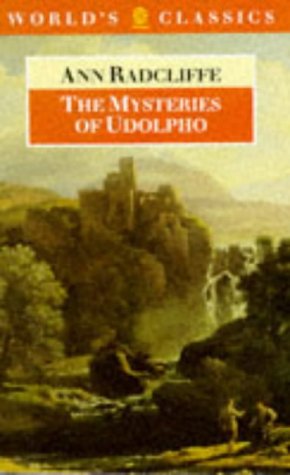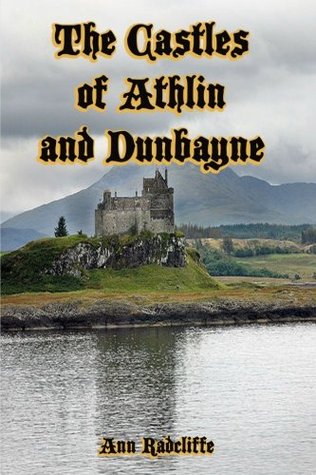This is the first of an occasional series on authors who were once household names - and in some cases hugely wealthy - but who nowadays are largely unknown.
 |
| Ann Radcliffe (Wiki) |
Today's focus is on
Ann Radcliffe (1764-1823). Ann was born into a middle-class family, and seems to have been shy as a young person. She married William Radcliffe in 1787 - he was a journalist and editor of
The English Chronicle, a paper of fairly radical opinions. It was he who initially supported and encouraged her writing. But before long the support - at least in a financial sense - was the other way around. At a time when the typical annual income of a writer was around £10, she sold the copyright to
The Mysteries of Udopho for £500 in 1794, and three years later earned £800 for
The Italian. These figures were considered unbelievable by leading publishers, and placed her as the highest paid writer of her time. It's hard to compare money values from a couple of hundred years ago, but in terms of a wage bonus, that £500 would be roughly £600,000 today, and in terms of your economic power, more like £6 million (see the web site
Measuring Worth). Not bad, by anybody's standards, and one could reasonably compare her to JK Rowling.
 |
| Cover - The Mysteries of Udolpho (Goodreads) |
Ann began her writing, like many others of her time, with travel literature, and descriptions of place form key parts of her later novels. In an age where tourism was becoming a popular activity for the middle class, but in which most people had never actually visited many other countries, the travel writer was in high demand. Her first novel, in 1789, was
The Castles of Athlin and Dunbayne, set in the highlands of Scotland. She then proceeded to publish four more novels, each in several volumes, over the next eight years. A final novel - a historical romance - was published posthumously, along with a philosophical essay. Perhaps the best known of the works of fiction is
The Mysteries of Udolpho. Her chosen genre was the gothic novel, and she rapidly established herself as the leading exponent of that style, She took an existing form - first created by Horace Walpole in his 1764
Castle of Otranto - and transformed it into a serious literary form.
 |
| Cover - The Italian (Goodreads) |
One of the great mysteries of her life is why, following the enormous successes of those five novels, she disappeared from the public eye and remained in seclusion for the rest of her life - some twenty-five years. Sir Walter Scott wrote of her that "
no author, whose works were so universally read and admired, was so little personally known." There were rumours - almost certainly untrue - that she had gone mad and been confined in an asylum. The truth seems to be more ordinary. She had financial security, lived a pleasant and satisfying life with her husband, and moreover strongly disliked the way that the gothic novel had developed. In Ann's hands, it was a lyrical art form exploring human relations, gender roles and stereotypes, and showed a growing interest in what we would now call psychological states. Others treated it in sensational and lurid ways, focusing on violence and horror. It seems that her abandonment of the genre was, at least partly, because she did not like what it had become. Her last novel in her early productive period,
The Italian, was subtitled
A Romance, and shows a movement away from gothic novels.
 |
| Cover, Lake District Observations (Books Cumbria) |
Her observations as a travel writer are sensitive and acute. I first came across her writing in the form of a travel guide to the Lake District. Her descriptions of places and journeys are still easily recognisable now, especially the climb to the summit of Skiddaw. She did the trip on a pony, whereas I have walked it, but the route is the same. Here's a later section describing her journey south to Grasmere, along what we now call the A591:
Beyond Dunmail Rays, one of the grand passes from Cumberland into Westmoreland, Helm-crag rears its crest, a strange, fantastic summit, round, yet jagged and splintered, like the wheel of a water-mill, overlooking Grasmere, which, soon after, opened below. A green spreading circle of mountains embosoms this small lake, and, beyond, a wider range rises in amphitheatre, whose rocky tops are rounded and scalloped, yet are great, wild, irregular, and were then overspread with a tint of pale purple.
Like her fiction, her travel prose is flowing and engaging, leading you easily between outward appearance and inward reflection. Many of the famous travel writers of her day were creating books to help artists find the ideal location for a painting - a style known as
picturesque: Ann wanted to experience the places in an emotional way, and for their own sake rather than as a source of pictures.
 |
| Cover, The Castles of Athlin and Dunbayne (Goodreads) |
How can her writing be characterised? Firstly, everything has a rational explanation, however mysterious it seems at first. The characters in her books might well be persuaded by terror or guilt that supernatural things are afoot, but the truth eventually emerges. Rationality lives alongside emotion, authentic spirituality, and a deeply moral view on life. She established a feminine voice on what was then called
the sublime - what we might now call
the numinous - at a time when most opinions on the subject were written by men. The women in her books are at first trapped by the expectations of their society, and subject to all manner of fears and swoons - but they are able to change and adapt by finding a source of inner strength. The central characters are normally led to false conclusions by believing too easily in rumours and half-truths, but in the end the real truth is revealed. Mysteries abound, not least in the background histories of the central characters, and these slowly reveal all kinds of unexpected secrets.
Like many gothic novels, her books are set in a wild and romantic past, typically outside England.They would nowadays be classed as historical novels. For example,
Udolpho is set in the late 16th century in southern France and northern Italy. At this stage she had not personally visited either country, but her descriptions are so vivid and compelling that this is very easy to forget. In a day before Google Earth, photography, and widespread international travel, she relied heavily on the accounts of others... yet it is easy to believe as you read her that the accounts are based on personal observation. The wild terrain is a source of delight and inspiration rather than fear and darkness, especially for her women characters who retreat to such locations to find solace and peace. Some of her vocabulary may be old, but her preoccupations and interests still resonate well today.
In short, I feel that Ann Radcliffe deserves to be better known, although on balance I'm not sure that she would mind the rather concealed role she now fills. As early as 1862, Thackeray could lament that the younger generation did not know her works. In fact, most of the major 19th century British authors acknowledge their debt to her - Jane Austen, the Bronte sisters, Walter Scott, and Charles Dickens, for example - quite apart from those of other countries. like Dostoevsky, whose parents read her books to him in the evenings. However, these people have remained household names, while she has not.
It's appropriate to finish with part of her obituary in the Literary Gazette: "
the finest writer in this kind of fiction that ever existed."
About the author:
Richard Abbott is one of the reviewers at The Review, and lives in London, England. He writes science fiction about our solar system in the fairly near future, and also historical fiction set in the ancient Middle East - Egypt, Syria, Canaan and Israel.
When not writing words or computer code, he enjoys spending time with family, walking, and wildlife, ideally combining all three pursuits in the English Lake District. He is the author of
In a Milk and Honeyed Land,
Scenes From a Life,
The Flame Before Us - and most recently
Far from the Spaceports. and
Timing. He can be found at his
website or
blog, on
Google+,
Goodreads,
Facebook and
Twitter.






Great post Richard. Thanks for sharing. I must admit I'd not heard of this author, but now I have and feel. More informed!
ReplyDeleteThat's fascinating, Richard - almost as much for the references to the Lake District (which as you know tends to be very Wordsworth-centric!) as the literary aspects. Though the idea of scaling Skiddaw on a pony boggles the mind....
ReplyDeleteEnjoyed this very much Richard.
ReplyDelete